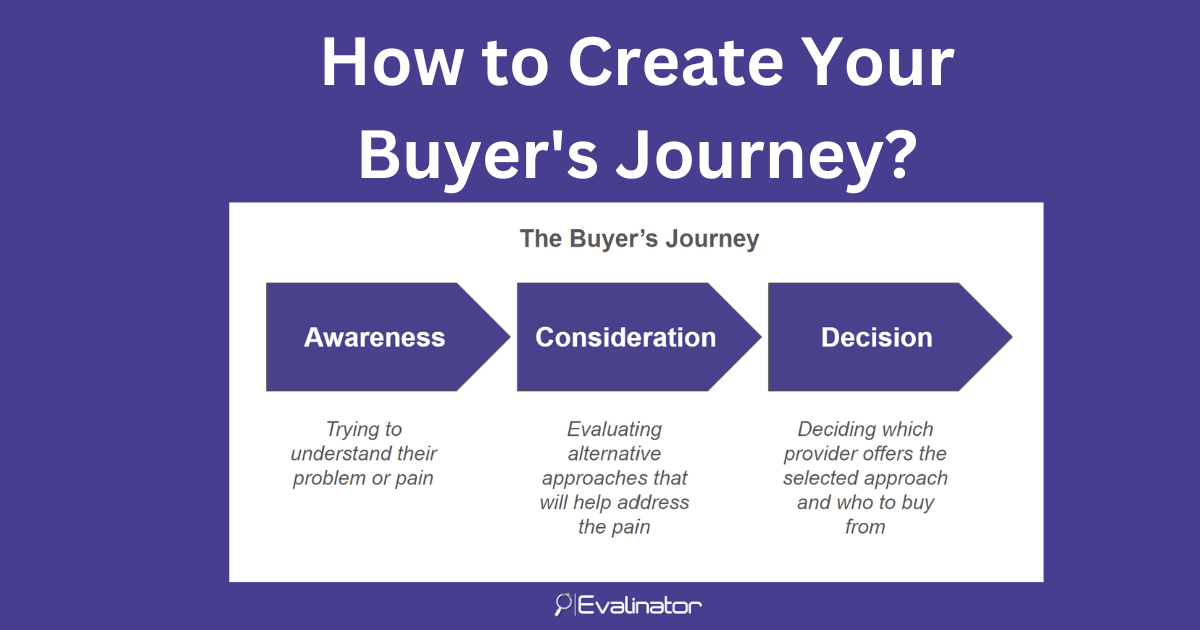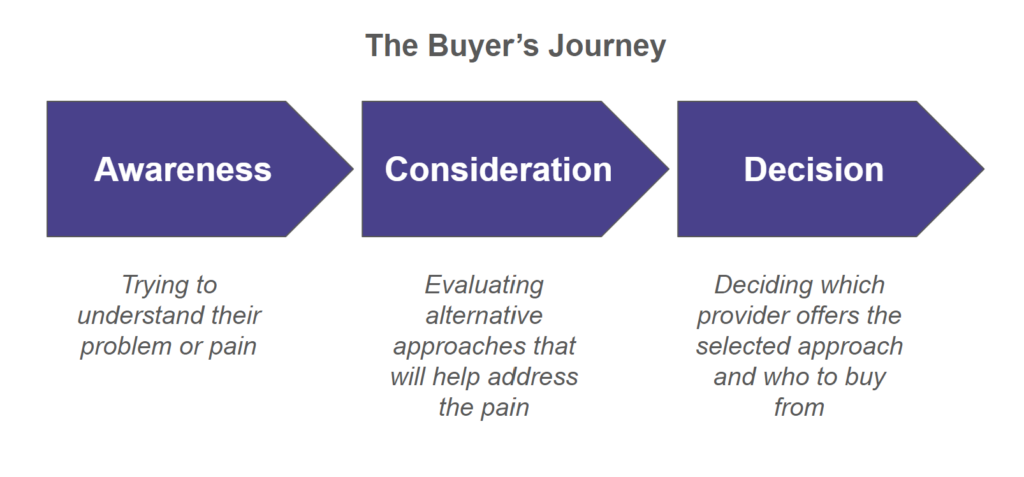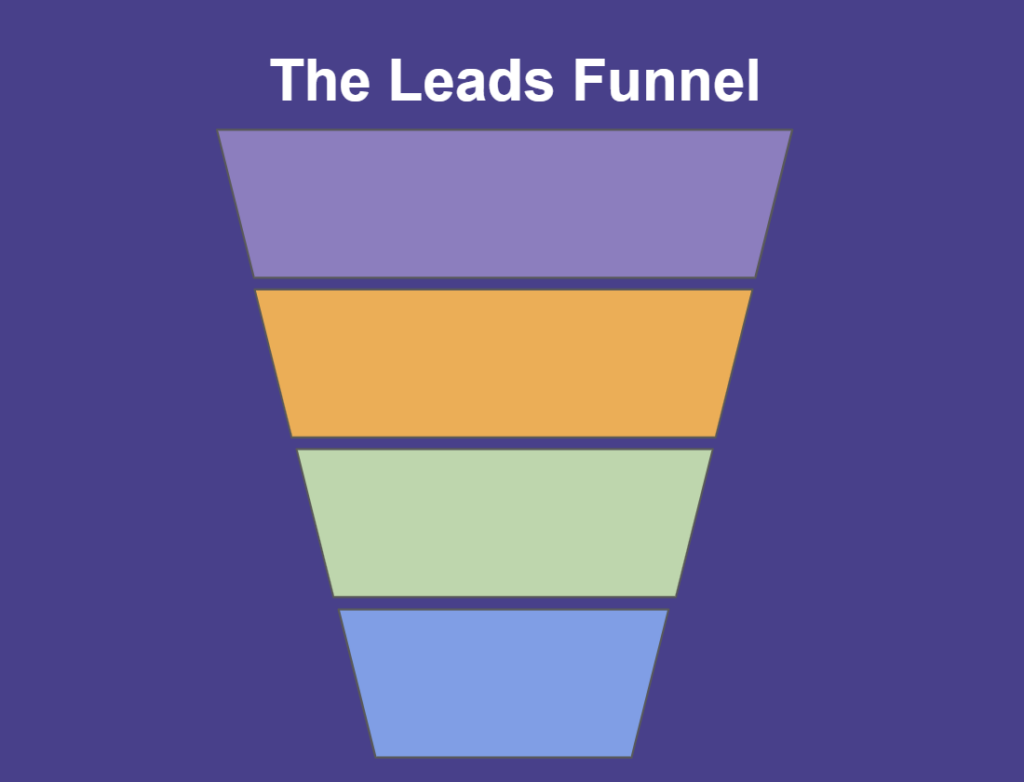


A buyer’s journey describes how your prospective customers go through the usual buying cycle of research, evaluation, and decision making.
So, whether you want to sign clients up for an initial discovery call or sell an engagement, you will need to be able to help them along this journey.
In this post, we’ll discuss:
This is also a great way to beat the writer’s block. Once you know why and what, it’s easier to let your thoughts flow and get your expertise on paper.
According to HubSpot, a leading sales and marketing platform, a buyer’s journey is made up of 3 stages:

In order to engage your clients, you should be able to speak to all 3 stages.
Your buyers could be in any of the 3 stages.
To be able to create your target buyer’s journey, all you have to do is to answer the questions that buyers are asking at each stage.
But first, if you don’t have a well defined buyer persona, let’s create that. It makes it much easier to strategize.
Your buyer persona will contain:
Now that you have defined a persona, define the 3 stages of their journey:
Let’s take an example:
If you help people with their career, then the problem you are working with may be “career growth”. It could be caused by various things such as lack of skills, the wrong job, lack of people skills, and so on.
In awareness stage, help them identify the problem and it’s cause. For example, they may not need your help if the cause of their problem not something that you help with. e.g. learning a new skill.
In consideration mode, help them analyze potential solutions to this problem, for e.g. lack of people skills. These could be coaching, self-help courses, peer support, mentoring, and so on.
In decision mode, then help them select you over other coaching options. What are your differentiators? How will you best help them address their problem? What is a good coach and how you are one?
Now that you have your buyer’s journey defined, it’s time to start creating the right content and tools.
Having defined the questions that your target buyers are asking at each step, you avoid the problem of writer’s block.
You don’t have to guess what you need to write or publish.
Here’s what to do.
Here’s an example:
Awareness:
Consideration
Decision
Now that you have a good handle on your buyer’s journey and how to address it, you can think of the types of content to create.
With every topic, you should also be thinking of a lead magnet – something which gets your clients to submit their email address to you.
We recommend doing the following:
Note: Evalinator offers multiple types of quizzes and assessments such as Wheel of Life, Personality or Type assessments, Scored assessments and so on. The advantage of a quiz is that you get more information that helps you with higher quality follow-up conversations.
People love helpful material. To create a checklist or a quiz, you simply break down the topic into smaller areas.
For example:
Tip: Use AI
Remember, artificial intelligence or AI tools provide a great way to get started today with content writing. Try ChatGPT (https://chat.openai.com). It’s free and one of the best tools available to get started. Tell it what to write on, and you’ll get a decent baseline version to edit and publish. You can even ask it to suggest some checklist items or questions for your quiz! You will have to tell the AI a few times to improve the things it didn’t write well. (e.g. include examples, keep language simple etc.). So be prepared for those revisions. Or you can get a content writer to help you improve the baseline of course.
Now that you have an idea of your buyer’s journey, you can systematically address each stage of it.
If you want to create a quiz or assessment, please give Evalinator a try. We have a 2 week free trial and personalized support available to help you get your assessment or quiz ready.
Check out our templates for coaches and technology consultants.
The next big challenge you will face is promoting yourself and getting your content and quiz/assessment in front of your target buyers.
The key is to be patient and be consistent. You have already taken the most important first step of creating the right content / quiz as per your buyer’s journey. Now it’s all about getting out there.
Here are some resources to help with that.
Good luck!
Create Your Quiz or Assessment in Minutes >>

Feeling frustrated with lead generation?
Take this free, 5-minute quiz and get more prospects into your leads funnel.
Instant Results. Actionable recommendations. Email required.
Find Your Score >>